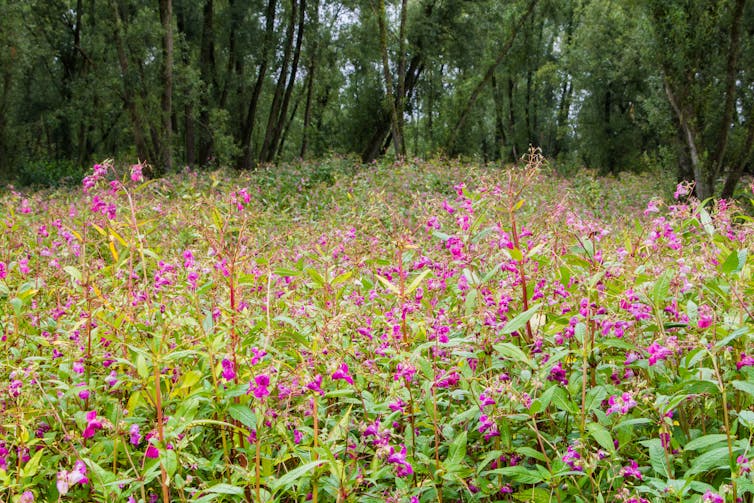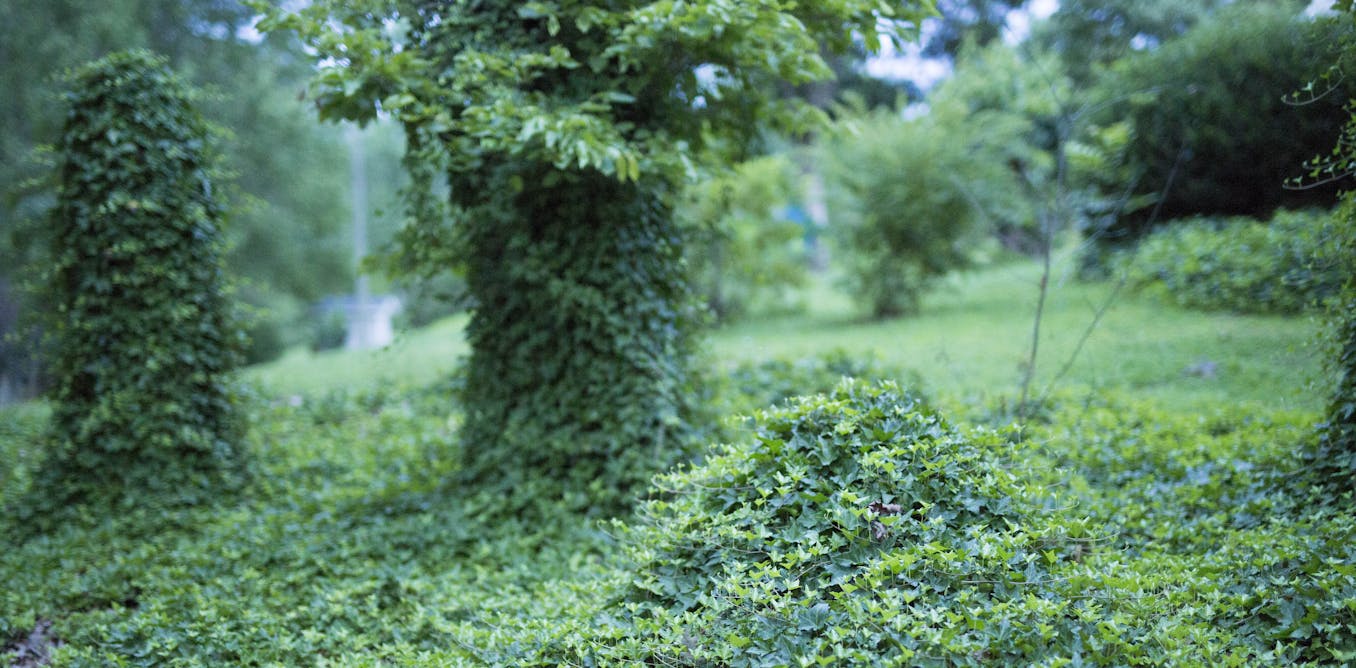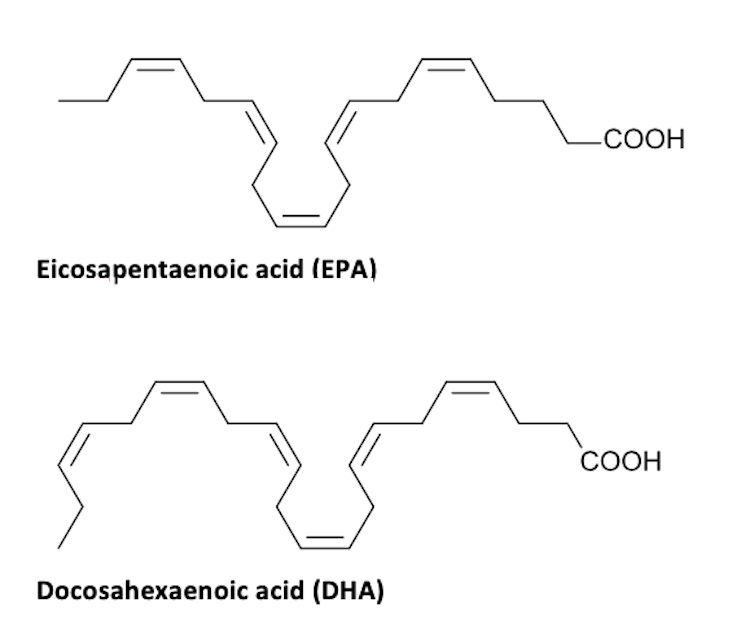A lot of people think of plants as pretty to look at, but defenceless and passive as far as organisms go. However, the many alien species – or “monster plants” – around us show we should never underestimate plants and the fascinating battles that go on beneath our feet.
Many of the first alien plants – those introduced by humans outside their natural range – to arrive in the UK were brought back by plant hunters of the Victorian era.
Plants have adapted over millennia to their environment. So, we would expect alien plants to struggle in new places. But some survive a little too well, and are so devastating to local plantlife that you need a permit to grow them.
One of these monster plants is Himalayan balsam (Impatiens glandulifera). Often, invasive alien plants grow faster and bigger because they don’t have to compete with their natural enemies from back home. This means they can grow taller than their native counterparts and literally shade out other species.
Many people think of plants as nice-looking greens. Essential for clean air, yes, but simple organisms. A step change in research is shaking up the way scientists think about plants: they are far more complex and more like us than you might imagine. This blossoming field of science is too delightful to do it justice in one or two stories.
This article is part of a series, Plant Curious, exploring scientific studies that challenge the way you view plantlife.
Himalayan balsam is from the western Himalayas and was brought to Britain in the 1800s by plant hunters who liked its pink flowers, which resemble orchids, and exploding seed pods that can project seeds up to seven metres.
This plant escaped gardens and spread along the British network of rivers, creating dense swathes along riverbanks. Himalayan balsam also successfully invades woodlands. It is the tallest annual herb in Britain, growing up to four metres tall. Yet in its home range, Himalayan balsam grows to only half that height. In the summer, UK conservationists take part in “balsam bashing” to try and stop its spread.
When we see plants in the wild, we may not think about what is happening beneath them. For example, many plants form relationships with fungi and bacteria which can give them nutrients they otherwise may not have access to.
When an alien plant species arrives in a new environment, the soil community may be different from back home. Some of these plants respond by changing the soil to benefit their own growth.
Himalayan balsam does this by reducing the amount of mycorrhizal fungi – the types that form mutually beneficial relationships with other plants below and above ground. It changes the bacterial community in the soil and part of the fungal community above ground. When Himalayan balsam grows in soil it has invaded the previous year, it grows faster and bigger, which scientists have linked to these fungal and bacterial changes. And even after you remove Himalayan balsam, native plants often don’t grow as well in that soil.

Intreegue/Shutterstock
Other examples of monster plants in the UK include rhododendron (Rhododendron ponticum), an invasive alien plant from southern Europe and south west Asia, growing up to eight metres high that thrives in woodlands, shading out native plants. Rhododendron hosts two deadly pathogens, Phytophthora ramorum and P. kernoviae, which infects Britain’s native trees.
Japanese knotweed (Reyneutria japonica), a monster from Asia, that reproduces by cloning itself, can regrow from a fragment that weighs just 0.3 grams (around the weight of a pinch of salt). This plant can be so damaging to buildings that UK homeowners are asked to declare on legal paperwork when they sell their house whether there is evidence of it on their property.
Giant hogweed (Heracleum mantegazianum), native to central Asia, can grow up to five metres tall, with each plant producing about 20,000 seeds. Giant hogweed releases toxic sap as a defence mechanism. This sap causes severe skin blisters and burns which can last for months or even years.
Monsters all over the world
As humans travelled the world more and more, so did the species they brought with them. Monster plants are a problem on every continent of the planet. You can even find invasive alien plants in Antarctica.
Pine trees were introduced into southern Africa following European colonisation in the 1650s for timber. South Africa is already drought prone, but a single pine tree consumes 20% more water than native plant species. For some rivers, pine invasions upstream can reduce the natural flow of water by up to 45%, meaning less water for people and ecosystems.
Kudzu (Pueraria montana) is a vine from Japan and China, introduced to the US in the 1800s to control soil erosion. It can grow up to half a metre per day, smothering grasses and other plants, including trees, with its creeping vine runners which can grow up to 30 metres long. In her novel The Color Purple, Alice Walker wrote that “racism is like that local creeping kudzu vine that swallows whole forests and abandoned houses”.
Gorse (Ulex europaeus) native to continental Europe and Britain, but was introduced outside its native range mainly in the 19th century as a nostalgic ornamental and hedging plant into several countries colonised by Europeans. This woody, spiny shrub can grow up to seven metres tall in its introduced range, compared with just two and a half metres at home. Gorse increases the risk of fire in Chile, reduces the growth of tree seedlings in New Zealand, and acidifies the soil, stopping the growth of rare plants in British Columbia, Canada.
Mesquite (Prosopis juliflora), also known in invaded areas such as India and parts of Africa as the “devil tree”, is native to Mexico and parts of South America. This species was introduced outside of its native range for firewood and livestock fodder, but quickly grows up to 12 metres tall. It has large thorns and low branches forming impenetrable thickets, taking over pastoral grasslands and wetland areas. Livestock that eat large amounts of its seed pods are poisoned and often lose their teeth due to the high sugar content of the pods. In dry arid regions where water is scarce, Mesquite’s root system absorbs water at a faster rate than native plant species.
For all these different reasons, invasive alien species are one of the biggest drivers of native species loss globally. But eradicating these plants is a difficult and expensive task. For many species, the best we can do is to reduce their size and spread.
Of course, the most effective strategy is stopping the arrival of alien species in the first place. Nowadays, many of the alien plants growing wild in the UK are escapees from the horticultural trade. So, choose native plants for gardening and gifting.
And for a view of something more exotic, botanical gardens are a wonderful way to enjoy the extraordinary diversity of plants without doing any harm to the local habitat.



